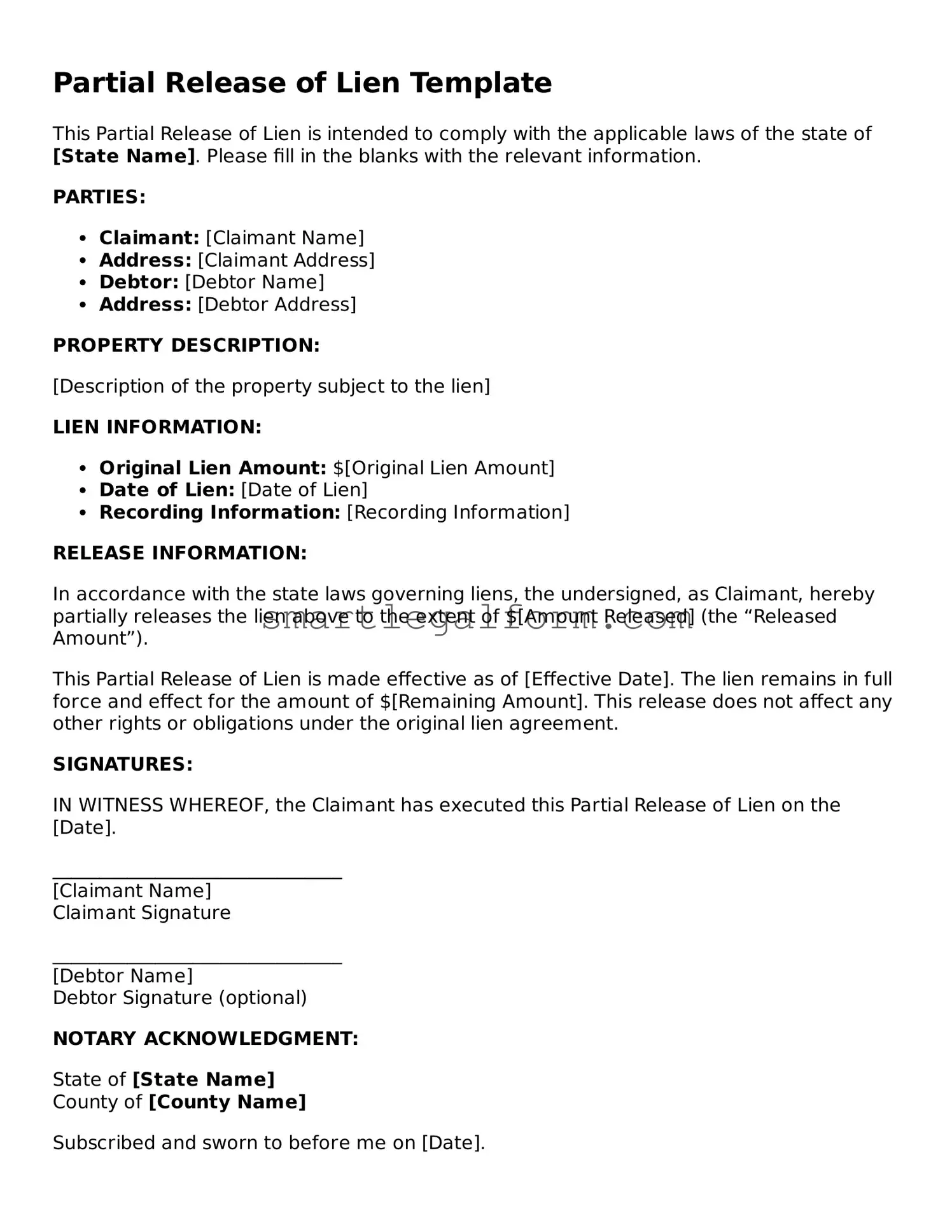Partial Release of Lien Template
This Partial Release of Lien is intended to comply with the applicable laws of the state of [State Name]. Please fill in the blanks with the relevant information.
PARTIES:
- Claimant: [Claimant Name]
- Address: [Claimant Address]
- Debtor: [Debtor Name]
- Address: [Debtor Address]
PROPERTY DESCRIPTION:
[Description of the property subject to the lien]
LIEN INFORMATION:
- Original Lien Amount: $[Original Lien Amount]
- Date of Lien: [Date of Lien]
- Recording Information: [Recording Information]
RELEASE INFORMATION:
In accordance with the state laws governing liens, the undersigned, as Claimant, hereby partially releases the lien above to the extent of $[Amount Released] (the “Released Amount”).
This Partial Release of Lien is made effective as of [Effective Date]. The lien remains in full force and effect for the amount of $[Remaining Amount]. This release does not affect any other rights or obligations under the original lien agreement.
SIGNATURES:
IN WITNESS WHEREOF, the Claimant has executed this Partial Release of Lien on the [Date].
_______________________________
[Claimant Name]
Claimant Signature
_______________________________
[Debtor Name]
Debtor Signature (optional)
NOTARY ACKNOWLEDGMENT:
State of [State Name]
County of [County Name]
Subscribed and sworn to before me on [Date].
_______________________________
Notary Public
My Commission Expires: [Date]
